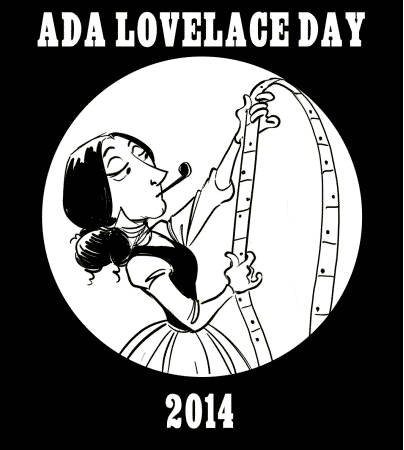Well, that’s kind of meta.
Source: https://seths.blog/2018/11/hiding-in-plain-sight/

Archiving my Twitter, Facebook and other social network activity
Map of the most common surname in each country in Europe, color coded by whether it translates as Smith, Miller, Priest, etc.
https://bigthink.com/strange-maps/most-popular-last-name-europe
Found them! Five photos, taken in fading dusk light after panickingly searching for my camera during what I sincerely hoped was a _test_ missile. 😉
This was the October 3, 1999 antiballistic missile system test described here http://articles.latimes.com/1999/oct/03/news/mn-18259
Files scanned October 14, 1999, and sat around for aaaaages. 🙂

KelsonV shared a status by brion:
The milky-way-like blob from exhaust and exploding missile debris makes for lovely formations in the fading high-altitude sunlight, which were quite the rorschach test for my friends.
I recall I thought one photo looked like the starship Enterprise; the lady at the photo shop (before good digital cameras!) said it looked like an angel; my classmate said it looked like a dog. 🙂
—
I might actually have a copy of at least one of those pictures. I’ll take a look.
—
I found this one. No EXIF, and the text file only notes that you took it, but the files are timestamped Oct. 4, 2003.

And now it’s even more distributed!
I’ll email you the original(?) file, since Mastodon seems to have resampled it even though it didn’t need to resize it.
“Real Life Comics” on the Internet of Things….
https://reallifecomics.com/comic.php?comic=october-1-2018

Had a conversation this morning on the importance of not shaming people for learning new things that they “should have known already.” It reminded me of this XKCD from a few years back.

Oh my god, dude I love this. It’s like a plot out of the silver age.
[Yeah, the Silver Age was definitely the inspiration for this story! There are plenty of winks and nods to it throughout the story, not the least of which is the dedication to John Broome. –Lia]
I really appreciate Morrison’s work on Flash and JLA because for him, bringing back the Silver Age didn’t mean just bringing back specific characters, it meant bringing back the creativity, the wild and madcap ideas, the storytelling sense that anything is possible.

To her friend… (From the OVC Archive!)
https://www.kickstarter.com/projects/173804573/the-complete-our-valued-customers
Perspective

winterezra:
This is the most Reddit thing I’ve ever seen.
They call it the 11pm showing.
I think one of the markers of maturity is to look at a piece of art or pop culture and say, “Well, this isn’t my thing, but that’s OK.”
But of course that’s a lot quieter than complaining about kids these days and their awful TV shows/music/whatever, and how it’s nowhere near as good as the equivalent when *I* was that age (that I’m remembering through rose colored glasses, and of course that *shaped* my tastes), now that stuff was the pinnacle of TV/movies/sci-fi novels/etc. and everything out now is trash.
So guess which viewpoint gets noticed.
In “Play of the Year” (March 1943), a theater producer sabotages a rival’s production by faking a measles outbreak among the cast. The boarding house where they’re all staying is immediately quarantined.
Of course, this is a Jay Garrick Flash story, so there’s a madcap solution: the Flash will perform every part in the play at once!
Golden Age Flash vs. the Measles
As someone who grew up after the measles vaccine, I tended to think of it as not a big deal, just one of those childhood diseases that previous generations had to deal with. So back in the mid-2000s when I was tracking down every Golden Age Flash story I could find, I was surprised to see that Flash Comics #39 treated it as serious business (which, of course, it is).

The Adventures of Lovelace and Babbage is a steampunk comedy comic about an alternate reality in which (a) Charles Babbage actually built his Difference Engine and (b) Ada Lovelace lived long enough to implement her programs for it. Great fun…and it’s being turned into a graphic novel!

Perfect
I actually have seen people say this, but most of them are paranoid enough that I’m sort of surprised they’re online in the first place.

sinnathedisturbedweirdo:
zonkos-jokeshop:
totally-not-anne-frank:
ugh-trxye:
profeziafenice7547-marty:
I’ve given up trying to correct people.
Honestly mine isnt even hard but people are dumb
Seriously how hard is it to spell Laurel?! It’s literally Lauren with an L
BOTH oh my god just sound it out it’s not that hard people see more than 6 letters in my last name and freak out like it’s yiddish or something
I don’t know how many people think my name is Sanna or Stina when it is Sinna
I no longer correct people unless their error would create problems in the future (such as something tied to ID or legally/medically important). I just go with whatever they call me or however they spell it, because 99% of people who don’t know me well get it wrong.
I’ve taken to automatically spelling my name when I give it to someone who might need to write it down. I actually have to stop myself sometimes. It still doesn’t always work.

Having grown up in California during the 1980s, I can’t imagine NOT turning the water off while I brush my teeth. OK, I can imagine it, but it’s like chewing on aluminum foil while reading an article entirely written in Comic Sans in white type on a light gray background with terrible spelling, grammar, and a complete disconnect from reality, while listening to Wolverine scrape his claws against a chalkboard.
Found at https://wateruseitwisely.com/tips/category/bathroom/

Having killed a jade plant by giving it too much water*…yeah. There's no sense in wasting water AND killing your plants.
Found at https://wateruseitwisely.com/tips/category/landscape/
*To be fair, the plant also went through a termite tenting. I took cuttings rather than try to transplant the whole thing, and the cuttings are all still just fine. I'd put more blame on the tenting if the original plant hadn't hung on for another 7-8 months.

Not only does this use less water than running the faucet (I'm always surprised by how much that actually uses!), it makes it a lot easier to scrub when the pans are done soaking. For extra savings, nest them while soaking, or soak one at a time while you're working on other dishes and reuse the water from one pan to the next.

We've been doing this for a couple of months now. Admittedly our vegetable garden's not that big, but we haven't needed to use the hose for watering in all that time (much to J's annoyance).
Found at https://wateruseitwisely.com/100-ways-to-conserve/
Lee Vibber This explains why he was so happy to help me water with the hose!